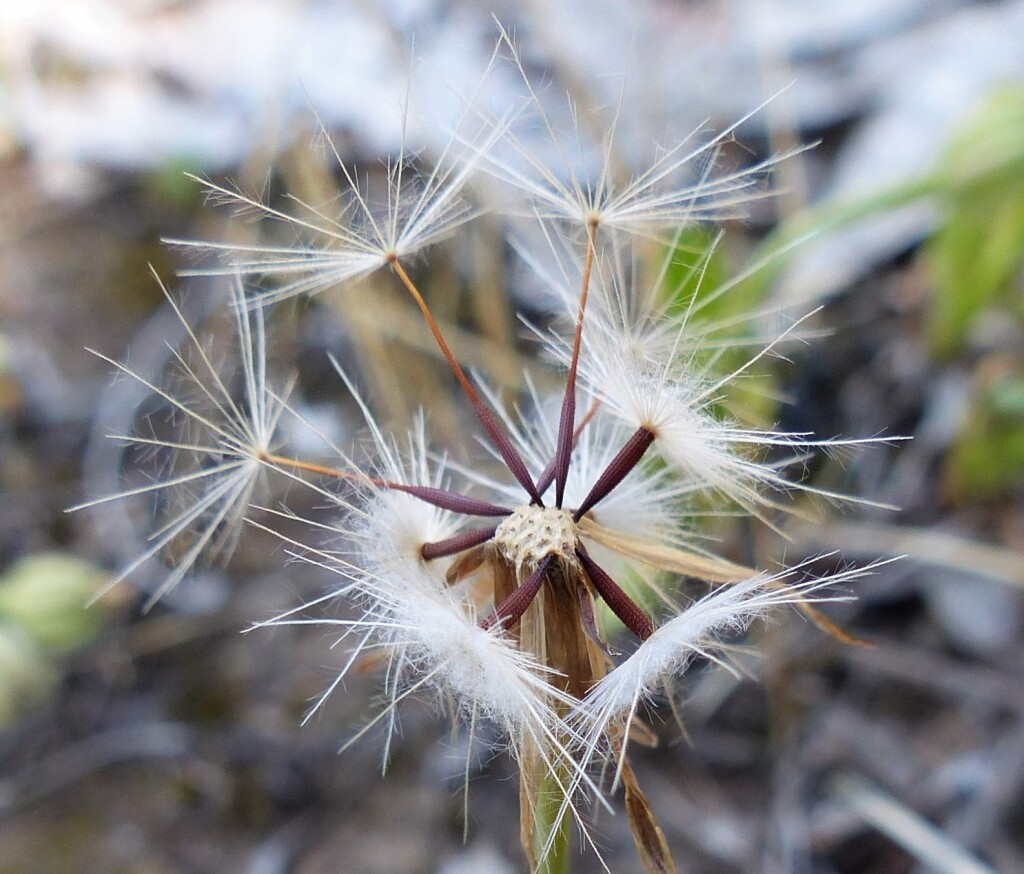Crepis setosa
Haller f. Bristly HawksbeardErect annual to c. 100 cm high; stems with stiff, pale, spreading hairs to 2 mm long. Rosette (weakly developed) and lower cauline leaves petiolate, c. oblanceolate, commonly deeply pinnatifid, occasionally c. entire, mostly 6–20 cm long and 1–6 cm wide, sparsely to moderately short-bristly all over; upper cauline leaves sessile, c. auriculate, toothed to pinnatifid, particularly near base. Capitula turbinate to campanulate, erect in bud; outer bracts linear, outer surface with pale, coarse eglandular bristles to 2 mm long, mostly along midrib, sometimes also with short cobwebby hairs, inner surface with fine appressed hairs (at least toward apex); inner bracts lanceolate, 7–10 mm long, indumentum as for outer bracts; ligules to c. 8 mm long; receptacle with low ciliate ridges. Cypselas 4–7 mm long, narrowly beaked for c. half their length; pappus bristles in 1 row. Flowers Dec.–Apr
VVP, VRiv, GipP, CVU, NIS, EGU, HSF, HNF, VAlp. Also naturalised Tas. Native from the Mediterranean region to south-west Asia. Locally common in the Ovens River valley and nearby areas, uncommon elsewhere (e.g. Ballarat, La Trobe River valley areas), on roadsides, river flats, sometimes extending into native forest.
Walsh, N.G. (1999). Crepis. In: Walsh, N.G.; Entwisle, T.J., Flora of Victoria Vol. 4, Cornaceae to Asteraceae, pp. 685–688. Inkata Press, Melbourne.
 Spinning
Spinning


